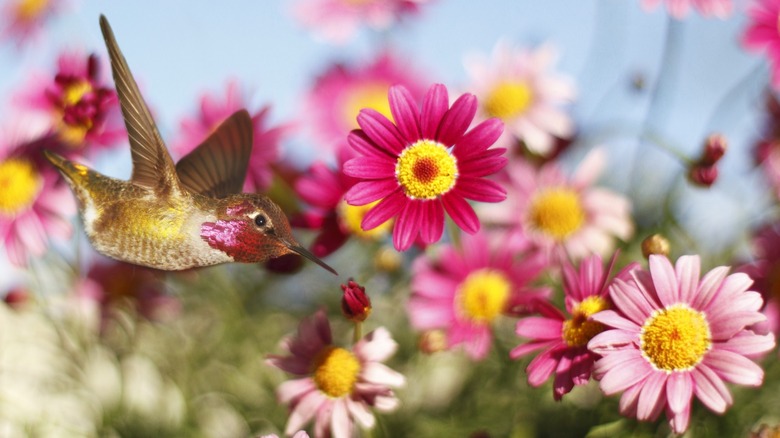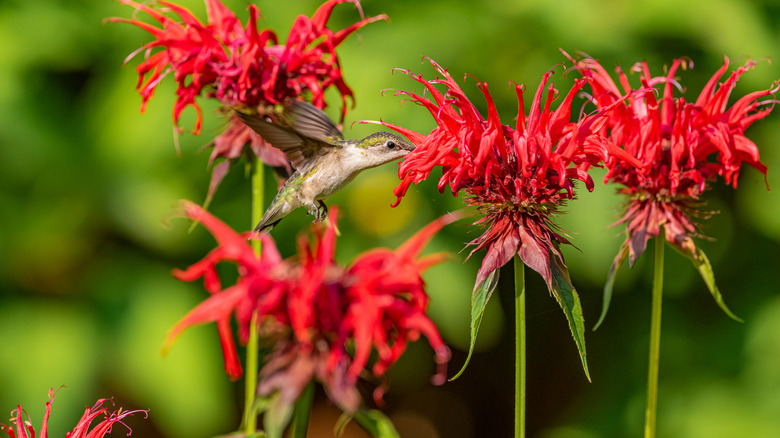The Secret To Attracting Hummingbirds Is All In Their Bird's Eye View
Hummingbirds, the smallest birds in the world, are some of the most fascinating creatures to watch zipping in and out of your garden at more than 30 miles per hour. The nearly 340 species belonging to this avian family are not only fun to watch, but these beautiful birds are also effective pollinators. While you may know that bright nectar-producing flowers can attract hummingbirds to your garden, there's a lesser-known secret to bringing them into your space. To emulate nature and create a visually pleasing landscape that will catch a hummingbird's eye, plant flowers in odd-numbered clusters of three, five, or seven.
Landscapers use this technique to create natural asymmetry, increase diversity, create balance, promote pollination, and boost visual appeal. This strategy helps support your yard's ecosystem, encouraging plants and animals in your garden space to thrive — including hummingbirds. Hummingbirds don't rely on their sense of smell when choosing flowers to visit, but pick visually appealing blooms in clusters. While they prefer tubular flowers in the red, orange, yellow, and pink spectrum, any bright blooms will draw their eye.
Tips for planting flower clusters
Some perennial plants that can attract hummingbirds to your yard include trumpet vine, red morning glory, trumpet honeysuckle, cardinal flower, columbine, wild bergamot, and bee balm. While planting the odd-numbered clusters in clearly visible locations, be sure to leave room in between to allow hummingbirds the space to hover and drink. Choosing perennial and annual flowering shrubs, trees, vines, and herbs of varying heights can also be visually appealing to these jeweled creatures while supplying them with shade and shelter.
Butterfly bushes and weigela are good choices for your hummingbird oasis, as are flowering dogwoods and crabapple trees. And picking plants that bloom the longest will give your hummers a reason to come back all season long. When planning your outdoor space, also consider adding a water feature to attract these avian acrobats to your garden. You can provide a water mister for these visitors to bathe in or grab a drink on their way by, a shallow water dish for sipping and dipping, or a gently bubbling water fountain.
Keep in mind that hummingbirds also need a place to rest. After all, they beat their wings about 70 times per second and up to over 200 times in the same timeframe when diving. Be sure they have branches to land on and take a breather while deciding which plants will give them their next meal. If you're lucky, creating this safe and attractive habitat for hummingbirds will encourage them to nest in your yard, supporting their population and ensuring that they return year after year. In fact, you might even see the same exact hummingbirds every season.

